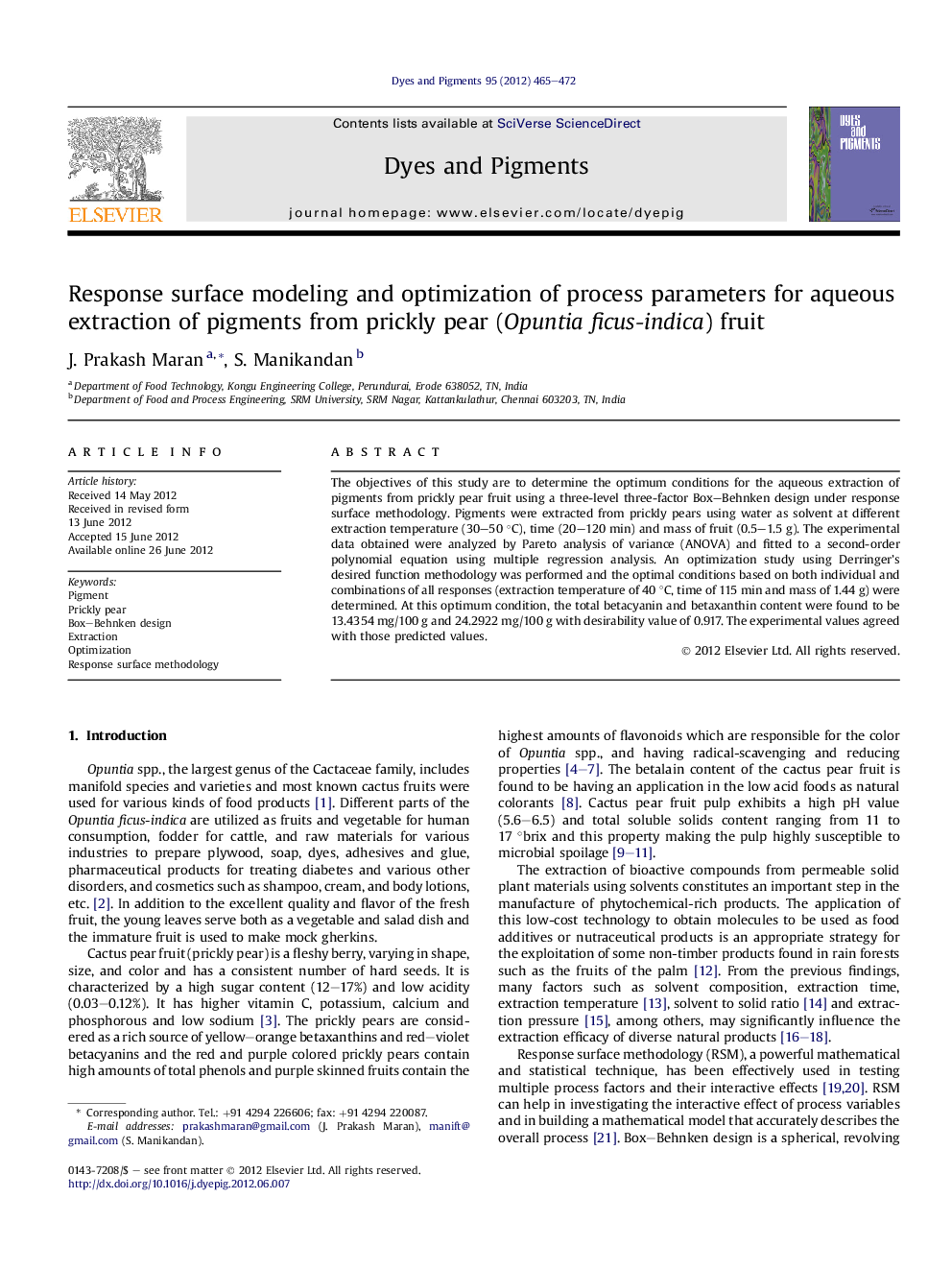| کد مقاله | کد نشریه | سال انتشار | مقاله انگلیسی | نسخه تمام متن |
|---|---|---|---|---|
| 176826 | 458957 | 2012 | 8 صفحه PDF | دانلود رایگان |

The objectives of this study are to determine the optimum conditions for the aqueous extraction of pigments from prickly pear fruit using a three-level three-factor Box–Behnken design under response surface methodology. Pigments were extracted from prickly pears using water as solvent at different extraction temperature (30–50 °C), time (20–120 min) and mass of fruit (0.5–1.5 g). The experimental data obtained were analyzed by Pareto analysis of variance (ANOVA) and fitted to a second-order polynomial equation using multiple regression analysis. An optimization study using Derringer's desired function methodology was performed and the optimal conditions based on both individual and combinations of all responses (extraction temperature of 40 °C, time of 115 min and mass of 1.44 g) were determined. At this optimum condition, the total betacyanin and betaxanthin content were found to be 13.4354 mg/100 g and 24.2922 mg/100 g with desirability value of 0.917. The experimental values agreed with those predicted values.
► Pigments extraction from prickly pear fruits.
► Box–Behnken design was applied to find out the optimum conditions.
► Second order polynomial regression models were developed.
► Optimal conditions were determined by Derringer's desired function methodology.
► Experimental values showed good agreement with the values predicted by the model.
Journal: Dyes and Pigments - Volume 95, Issue 3, December 2012, Pages 465–472